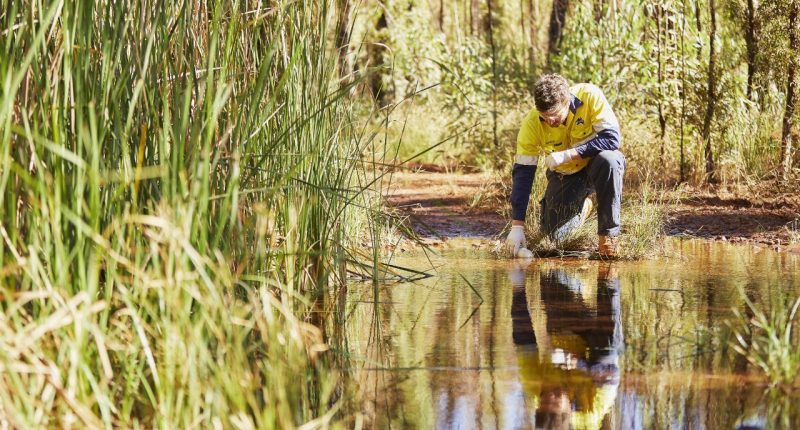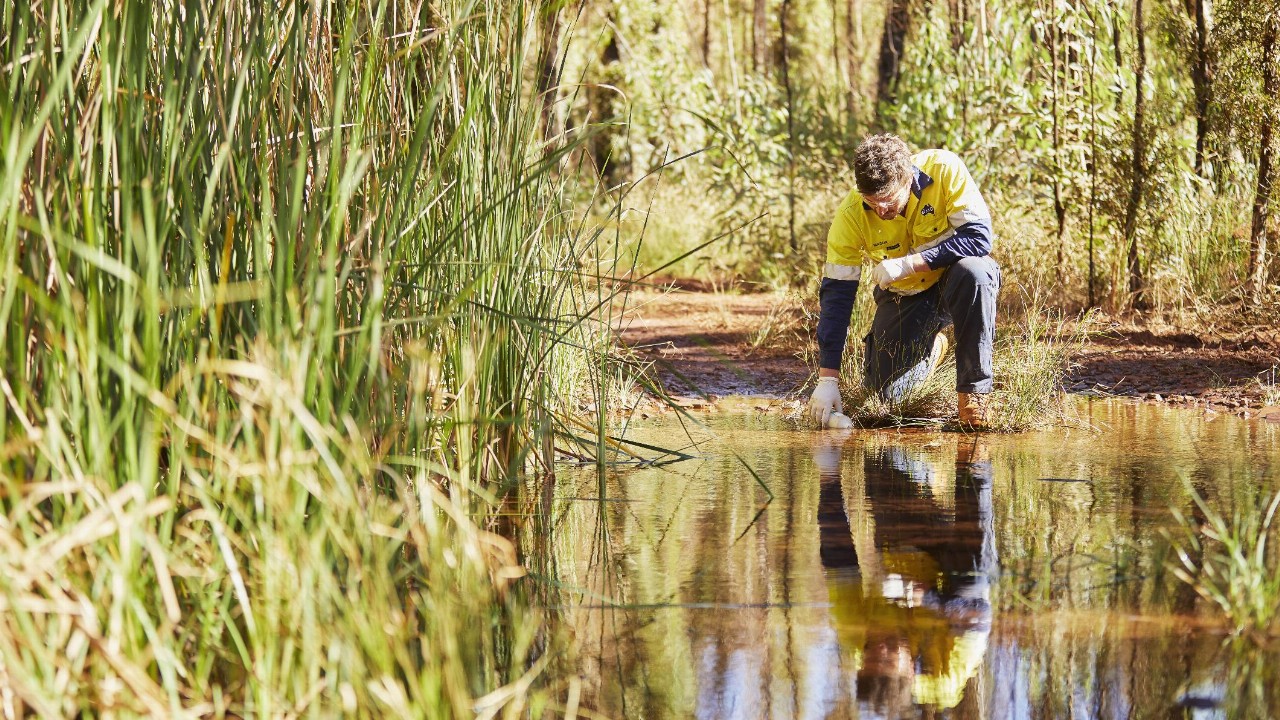- A massive push for green energy, led by electric car companies like Tesla, is increasingly spilling over into the mining industry
- Major companies like Fortescue Metals (FMG), Rio Tinto (RIO) and BHP (BHP) have committed to meeting strict climate targets and sourcing more renewable energy
- Now, smaller companies are starting to take a similar approach, realising that “green mining” will be a large part of the industry’s future
- Macarthur Minerals (MIO) recently appointed Andrew Bruton as chief executive and is further building out its “owners’ team” with those who can rise to these new challenges
- It’s the age-old principle that has sorted the winners from the losers: adapt or die — and it’s these adaptations that start in the boardroom
It’s 2021 and the world is screaming for green energy — green everything, in fact. German automaker Volkswagen pledged earlier this month to double its electric car deliveries this year, while BMW has said it expects at least half of its sales to be zero emission vehicles by 2030.
Notably, Cathie Wood’s firm Ark Invest recently upgraded its target share price for Tesla to US$3000 by 2025 — from its current price of around US$670 — based partly on massively increased unit sales to between five and ten million vehicles over the next four or five years — another signal of the world’s growing infatuation with green energy.
And now, that push is spilling over into the mining sector.
“We have this madness where we bring in diesel tens of thousands of kilometres across the ocean, then we use more diesel to take that diesel hundreds if not thousands of kilometres north to operate our mines, to operate our stationary power,” said Alannah MacTiernan, Western Australia’s first-ever Hydrogen Industry minister.
“All of that can be replaced by a renewable hydrogen product that can be made locally in regional areas.”
The need for green energy is a call to which some of Australia’s biggest miners have already saluted. Fortescue Metals (FMG) recently outlined an ambitious plan that would make it carbon neutral by 2030, ten years ahead of its previous target. It includes developing a ship design powered by green ammonia, testing large battery technology in its haul trucks and trialling hydrogen fuel cell power for its drill rigs.
The mining giant said it would also explore using renewable energy in the Pilbara to convert iron ore to green iron at low temperatures and without the use of coal.
Similarly, Rio Tinto (RIO) unveiled its intention last month to invest around $1 billion over the next five years in support of its new climate change targets and recently backed a push by shareholders to bring its emissions targets in line with the Paris climate agreement.
Likewise, BHP (BHP) has inked its second deal with Chinese steel mills in four months, establishing a joint effort to explore technologies that would help reduce greenhouse gas pollution.
But while the importance of green energy stems from a need-based, climate-change-focussed argument, it has a dual purpose.
“Due to its high energy performance and environmental neutrality, green hydrogen and direct green electricity has the potential to eliminate fossil fuels from supply chains,” said Andrew Forrest, Fortescue’s high-profile chairman.
“Once established, these advances will also substantially reduce Fortescue’s operating costs.”
Renewable energy costs have fallen sharply over the last decade thanks to improving technologies, economies of scale and increasingly competitive supply chains. Since 2010, the cost of utility-scale solar power has dropped 82 per cent, while solar power fell 47 per cent, and onshore and offshore wind fell 39 per cent and 29 per cent, respectively.
This is what it takes to become a billion-dollar mining company. It’s not just the physical act of pulling stuff out of the ground and processing it into a sellable commodity; it’s an awareness of everything else that goes with it.
Some of the more astute junior companies have taken note of that fact, realising that successful mining — profitable mining — in the future inherently has a green tinge to it. As a result, many have been focussed on building their own in-house A Teams — management suites that are capable of driving shareholder value through more climate-conscious approaches.
As Deloitte pointed out in its Renewables in Mining report: “Realising the full benefits from renewables involves more than installing a solar array or wind turbines; it requires a willingness to rethink operational processes and to reconsider the way work is done.”
In recognition of that, Macarthur Minerals (MIO) — which has its hooks in the Lake Giles Iron Project in Western Australia — appointed Andrew Bruton as chief executive at the start of December last year. His 20 years of advisory experience is based largely on complex mining, energy and infrastructure projects and transactions, and he’s been tasked with using those skills to bring the Lake Giles Project to production.
Speaking to The Market Herald, Bruton noted recent remarks made by Allison Herren Lee, the Acting Chair of the U.S. Securities and Exchange Commission, who argued that the supposed distinction between what is ‘good’ and what is profitable is increasingly diminished.
“Acting in pursuit of the public interest and acting to maximise the bottom line are becoming complimentary, and that’s what Macarthur is all about,” Bruton said.
“So it’s about doing good, and by doing good we will ensure that Macarthur not only survives, but thrives into the future.”
More recently, Macarthur unveiled the appointment of two key figures to its “owners’ team” — mineral processing engineer Dr Richard Peck and mining engineer Bernard Holtshousen — to drive the completion of a feasibility study for Lake Giles.
“The most important factor in assembling the Macarthur owners’ team is to ensure that it includes experienced professionals who have overseen successful mining and magnetite processing operations,” said Bruton.
“The deliberate decision to combine the expertise of Dr Peck and Mr Holtshousen is aimed at ensuring that the Macarthur owners’ team can facilitate responsible strategies and improve the efficiency of operations in the magnetite mining and processing at Lake Giles.”
But, regardless of individual perspectives on renewable energy, there’s a sense that companies need to get on board or get left behind. As the saying goes: “A man who procrastinates in his choosing will inevitably have his choice made for him by circumstance.”
In September 2016, following an angry storm, South Australia was plunged into an extensive blackout that left both residential and commercial properties without electricity for days. Heavily reliant on grid-connected electricity, BHP lost an estimated $130 million due to the forced shutdown of its Olympic Dam mine roughly 560 kilometres north of Adelaide.
The incident was a catalyst for Australian miners to evaluate their energy requirements. Since energy expenses are such a weighty overhead — typically 30 per cent of total operating costs, according to Deloitte — would it not make sense to ensure that the energy system in place is as reliable as possible?
Renewable energy isn’t going away. Rather, it’s one of the fastest growing industries there is. As a result, the need for management teams capable of embracing new technology and using it for commercial advantage has never been more important.
It’s the age-old principle that, since the dawn of time, has sorted the winners from the losers: adapt or die. And it’s these adaptations that start in the boardroom.








